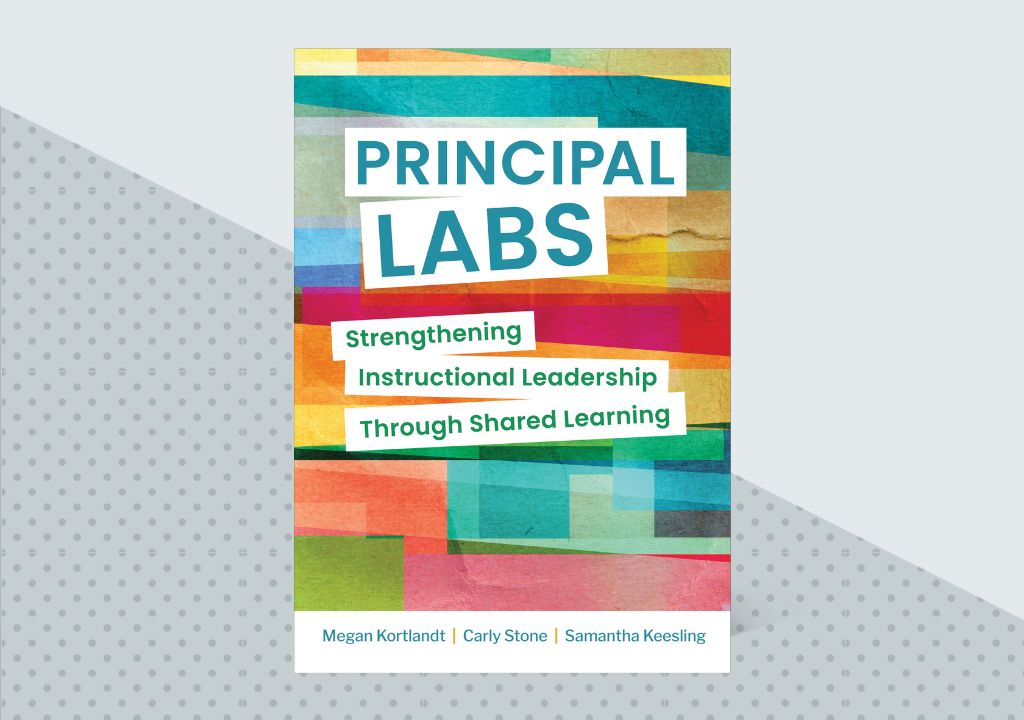As consultants at an intermediate school district, we partner with district teams to support instructional leaders in moving improvement efforts forward. Though there are often specific outcomes schools aim for, the work is rarely linear. Sometimes when things aren’t going as planned, it can feel like teams are missing something, but in fact, the need to adjust and readjust is critical to embracing a culture of continuous improvement.
Developing a culture that fosters continuous improvement is complex, but we’ve found that one clear sign of progress is when teams shift from deficit language to reflective language in how they talk about their work and the people involved in it. We've begun to see that intentionally changing our language can be a powerful way to help shift the culture itself.
By definition, a deficit is something that is lacking, missing, or less than. In the work of continuous improvement, we often identify what is missing. This isn’t a problem. It’s a necessary part of the work of identifying challenges and working through solutions. Deficit language is problematic not because it identifies needs but because it centers what’s missing.
So, how do we as educators shift our language in a way that helps everyone to embrace a culture of continuous improvement? We have found the following framing to be particularly helpful in shifting away from deficit language in our own practice.
Moving from Fear to Reflection
The first and most important action we’ve taken with our teams is to reflect on what we’re saying and hearing with curiosity. When teachers, coaches, and leaders monitor their progress to adjust their next steps for support, there is rarely a feeling that everything went exactly as planned and that all goals have been achieved. Because this work is often very personal, this can lead to feelings of inadequacy, frustration, and fear. When we respond without reflecting on the cause of those feelings, deficit language can occur. And it makes sense. Porges’ Polyvagal Theory shows that social interactions can affect the brain in much the same way physical stressors can. When we sense danger—both physical and emotional—it’s our instinct to either fight, retreat, or freeze (2009). To interrupt deficit language we first have to recognize the fears that are causing it.
In continuous improvement, danger comes when we, as educators, feel out of control or don’t know how to support change. This often manifests by distancing ourselves from the feelings that are triggering a response by redirecting them onto someone or something else.
To interrupt deficit language, we first have to recognize the fears that are causing it. Examples of fear-based language that we’ve said or heard include:
When we recognize this language creeping in, the following prompts can support reflection and help us to move out of a deficit stance:
Reflecting on what is causing deficit language to show up in the first place helps us to recognize our emotions and move past a fear-based response to improve the culture of our teams.
Moving from Generalizations to Specifics
Sometimes deficit language shows up despite our best efforts. When frustration sets in, we can resort to generic deficit statements. While our frustrations may stem from real challenges, deficit language can overgeneralize those issues, framing entire groups or efforts in terms of what's lacking rather than what's possible. In cases like this, we often say or hear language like:
They can’t…
Everyone thinks…
This doesn’t work…
We say these things without getting specific about who is actually experiencing a challenge or better defining what that challenge is. We aren’t discounting the problems that people are experiencing, but we do believe in interrupting this overly broad language to get more specific. Prompts we’ve found helpful to support this include:
Getting more specific about challenges helps us understand what exactly is or isn’t working and what potential solutions might be. Recognizing, for example, that a particular grade level of teachers—not all or a vague “they”—is finding it difficult to access a resource, makes it possible for a continuous improvement team to determine strategic next steps to support the work in moving forward. Shifting language from general statements to naming specific challenges allows educators to feel a stronger sense of control, heightening their ability to address real barriers.
Moving from Blame to Ownership
By definition, continuous improvement means continuously checking in on what’s going well, what’s not, and what might need to be adjusted. Sometimes deficit language shows up when educators discount their own role in supporting learners. In these cases, what is lacking or missing in their language is actually their ownership of the challenges they’re experiencing, rather than a deficit ascribed to others. When this is the case, we might hear or say things like:
Continuous improvement means continuously checking in on what’s going well, what’s not, and what might need to be adjusted.
It’s important to center our role in responding to both the challenges we’re experiencing and the identification of potential steps forward. Some questions that can support educators in this include:
What might our role be in…?
What have we or haven’t we done to support learners in that need?
If that’s a need you’re identifying, what might be getting in the way?
Paraphrasing has also helped us when we hear deficit language crop up. These stems go beyond simply restating what we heard and involve positioning a team member as having a positive intent to move the work forward. Some sentence stems for this type of paraphrasing include:
Moving from Absent to Included
Continuous improvement work is complex and involves many moving pieces and perspectives. When we look at data or discuss next steps, there’s often more that we don’t know than what we do. Leadership teams can help surface diverse perspectives, but no team can hold every perspective at once. Gaps in representation or understanding can still emerge—and when they do, they sometimes show up as deficit language. When this is the case, we need to more directly interrupt this deficit language, which can require a delicate balance: We don’t want to shut down the person who raised a concern, but we also need to take on the role of advocate for those whose voices may not be as fully represented in the room. To do this, we have found it most helpful to name the barrier, identify what is missing in a perspective, and then direct conversations toward solutions. This might look like:
Deficit language you might hear | Recognize the barrier they’re experiencing | Recognize the perspectives that are missing | What you might say to direct conversations toward solutions |
|---|
| "My teachers would never give up prep time for that." | Barrier: Time | Perspective missing: Teacher voice | “Preparing to teach takes a significant amount of time. How might we support this work in other spaces or think about freeing up their time in another way?” |
| "This program isn't working." | Barrier: Impact data isn’t what you hoped it would be. | Perspective missing: Other data sources (Is it working in other places? What does implementation data say about capacity, scale and reach, and fidelity?) | “We’re not having the impact we hoped for yet, and we know that how a program is implemented affects outcomes. What do we know about implementation? How might we start gathering data that tells us more about this?” |
Shifting Language, Shifting Culture
To create efficacious spaces where people feel connected to their work, rooted in data and research, and willing to continuously learn, shifting our language is a must. Through noticing and interrupting deficit language, we can create conditions where teams can focus on being in service of those they support through a culture of continuous improvement. By moving from fear to reflection, from generalizations to specifics, from blame to ownership, and from absence to inclusion, we can model the kind of learning culture we want to cultivate.
Principal Labs
As a school principal, finding time for your own PD can be a challenge. Learn how to effectively use your time to connect with other principals, practice and develop feedback skills, and make informed decisions for instructional improvement.









